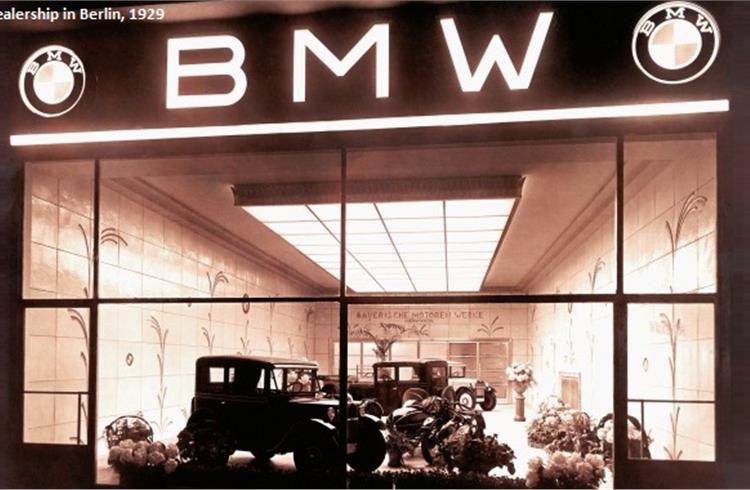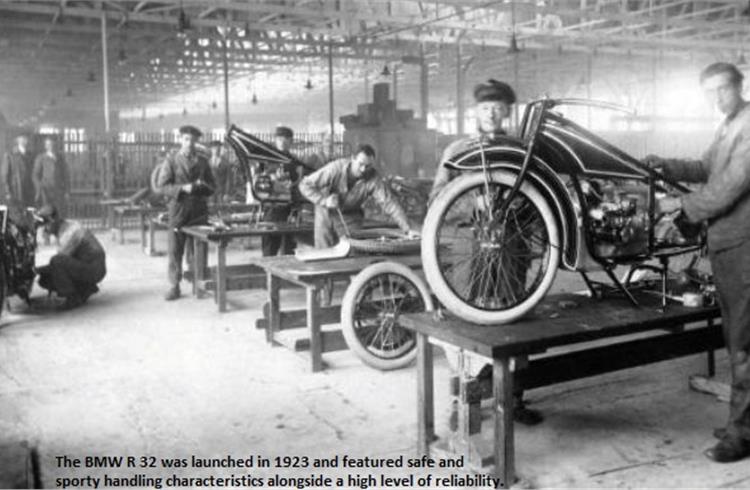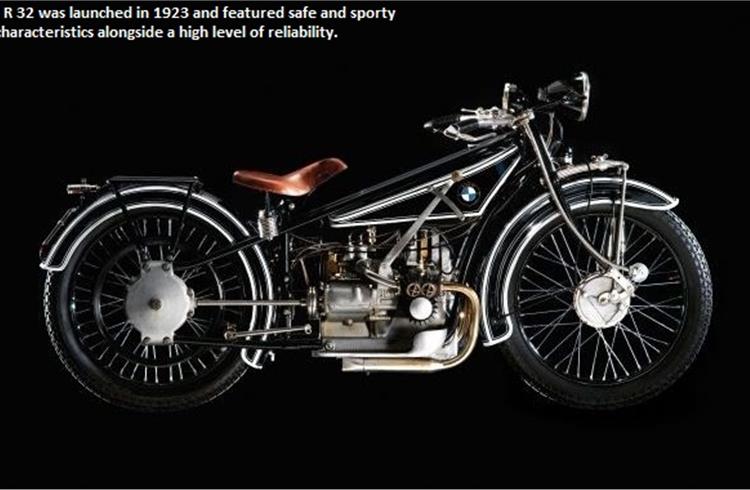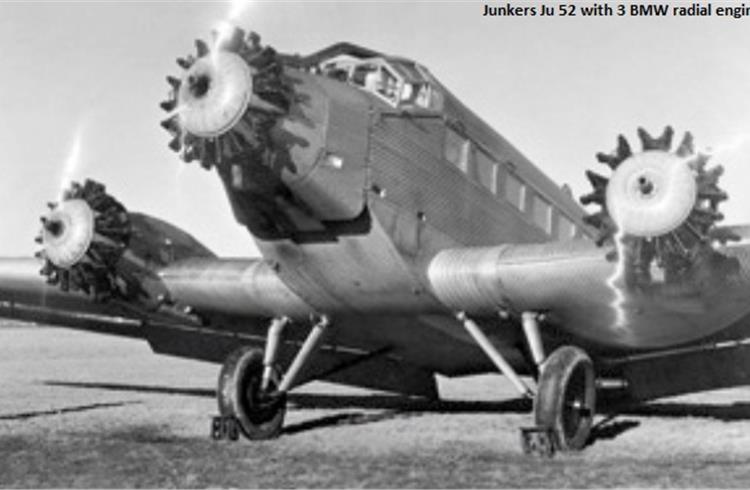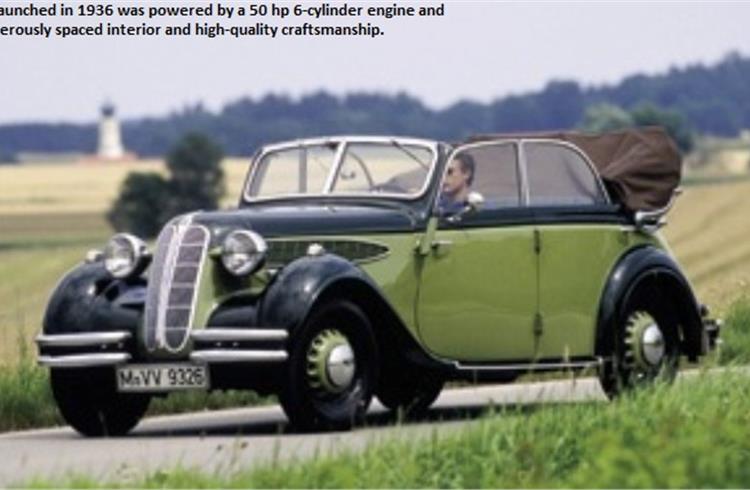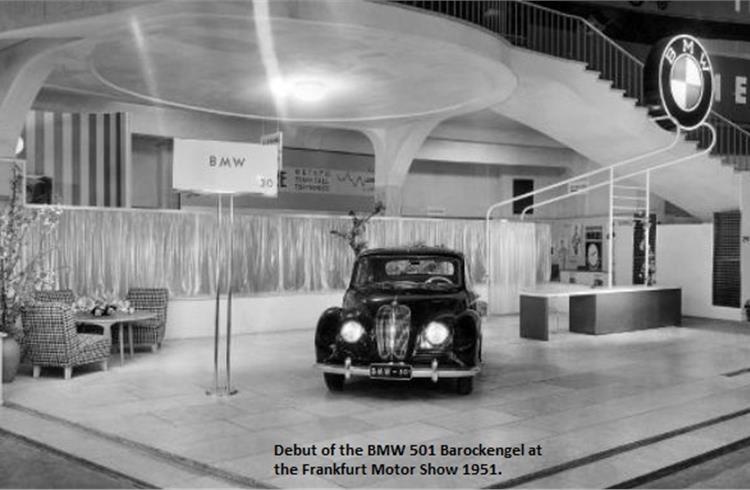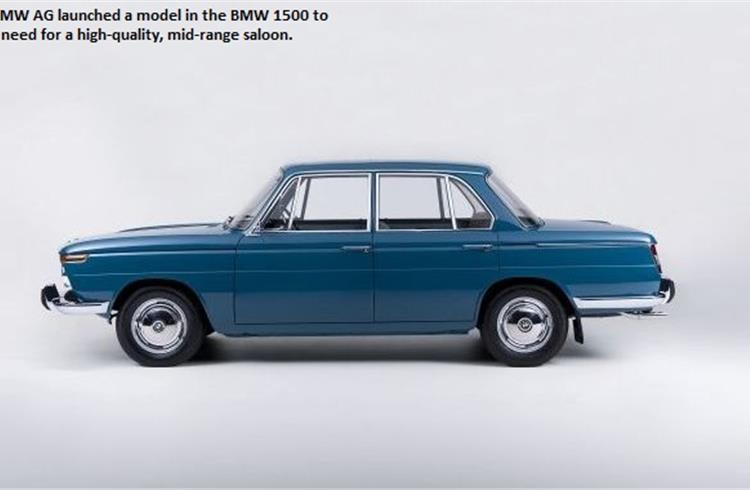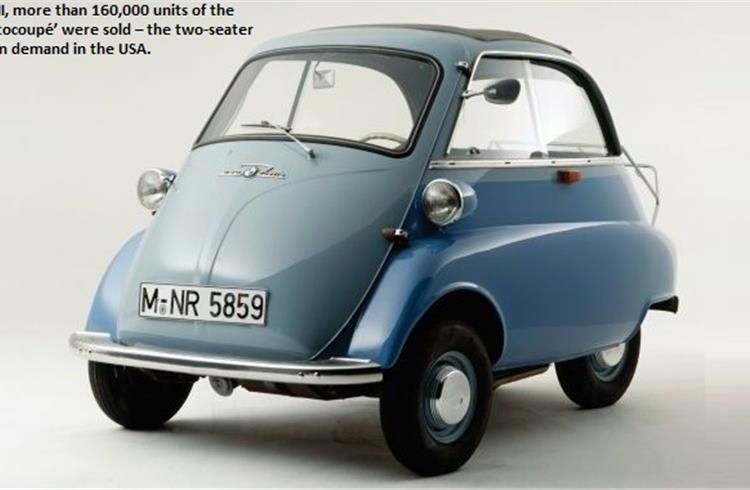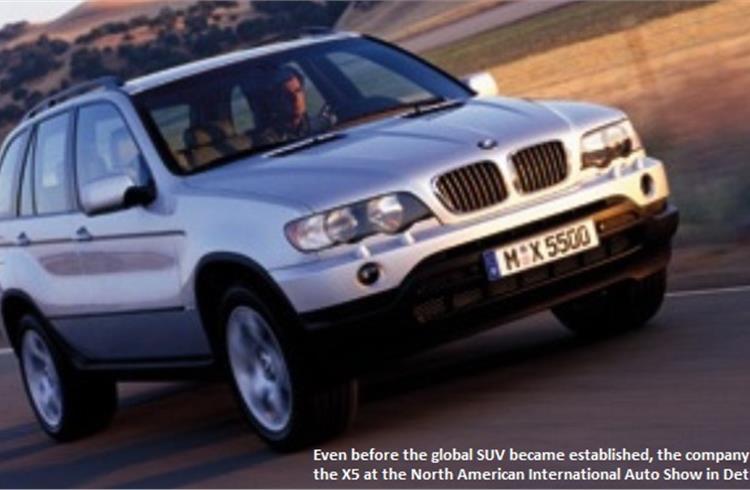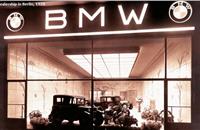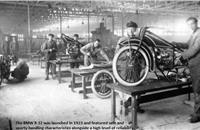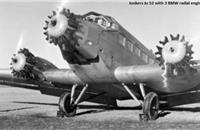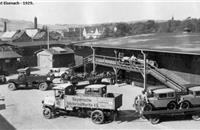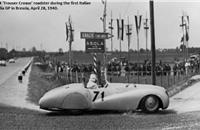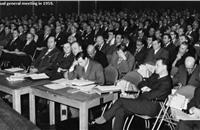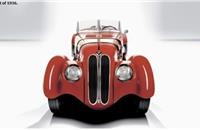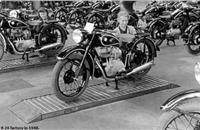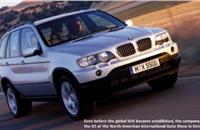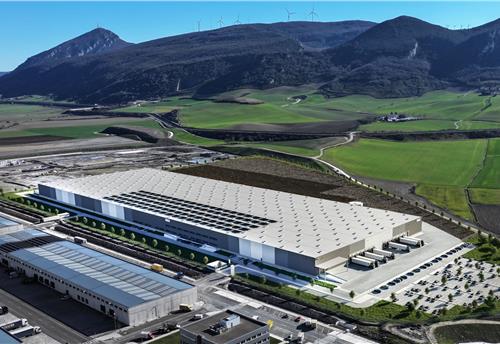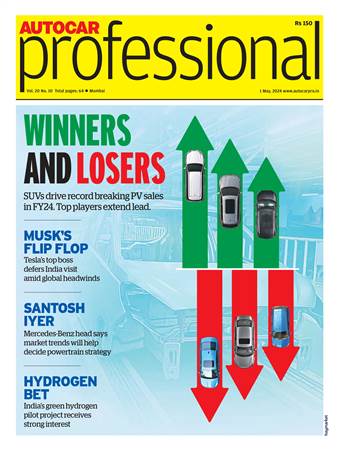BMW Group turns 100!
Over the past 100 years, a small aero-engine manufacturer has been transformed into a world-leading premium manufacturer of automobiles and motorcycles.
Flash back to exactly 100 years ago today: 7 March 1916 – Bayerische Flugzeugwerke AG is established as the successor to aircraft manufacturer Gustav-Otto-Flugmaschinenfabrik with its registered office at Lerchenauer Straße in Munich. In 1922, engine construction, the name and the brand logo of Bayerische Motoren Werke AG are transferred to this company. This is, therefore, regarded as the date of establishment of the ‘New BMW AG’.
Over the past 100 years, a small aero-engine manufacturer has been transformed into a world-leading premium manufacturer of automobiles and motorcycles, as well as a provider of premium finance and mobility services. Today, the BMW Group is an international group of companies with production and assembly facilities in 14 countries (including Chennai in India) and a global sales network. And the company makes significant contributions to designing individual mobility of the future.
The pathway from aero-engine manufacturer with sales primarily dependent on procurement by a government agency to a leading supplier of premium automobiles with global appeal to customers throughout the world is closely linked with the history of individual mobility over the past 100 years.
Time and again, the company succeeded in using its engineering skills and creativity to create products that successfully met contemporary needs and desires with unique qualities and an independent character. New vehicle segments were established and additional target groups were harnessed with an unerring instinct for identifying customers’ aspirations. This flair also identified market niches with potential for sustainable growth and developed innovations that were transformed into trends.
After the production of 6-cylinder aero-engines for military purposes had defined the initial years of the company, opportunities for new applications and challenges came up after the end of the First World War. The growing importance of civil aviation during the 1920s encouraged the company to design new and particularly powerful aero-engines on the basis of proven designs.
The BMW VI aero-engine, a 12-cylinder V engine, was launched in 1926. It went on to become an export hit across the world and developed into the company’s most successful product in the 1920s. The BMW VI was also fitted in the Heinkel HE 70, which was regarded as the fastest commercial aircraft in the world at the time and was nicknamed ‘Blitz’’ or ‘lightning’.
Panache for high-quality technology
The company also precisely geared its first motorcycle to the needs of the time. The BMW R 32 was launched in 1923 and featured safe and sporty handling characteristics alongside a high level of reliability. The driveshaft had clear advantages of low wear and minimum maintenance on dusty dirt tracks.
Right from the start, the R 32 acquired a reputation as a high-quality motorcycle. Over subsequent years, new models with new design details and increasing power were introduced almost every year. Over subsequent years, touring and sports motorcycles were made for widely differing customer aspirations. Sales figures developed positively not only in the home market. But also in the USA, in South America and in South Africa, as well as in the Far East. Even as far back as 1928, almost 5,000 BMW motorcycles were manufactured at the plant in Munich.
BMW was also aiming to attract sophisticated customers with the first mid-range automobiles. Most importantly, the 326 launched in 1936 was powered by a 50 hp six-cylinder engine and presented an exclusive offering with a generously spaced interior and high-quality craftsmanship. Around 16,000 units were sold and this made it the brand’s best-selling automobile up to that point.
The company was on a successful technological and commercial trajectory with its aero-engines, motorcycles and automobiles before the political changes in Germany during the 1930s brought the international alignment of the company and diversification in the civilian production programme to an abrupt halt.
BMW finds its niche in the mid-range class
In post-war Germany, the BMW Isetta initially reflected the spirit of the times during the years of the economic miracle. More than 160,000 units of the ‘Motocoupé’ were sold – the two-seater was even in demand in the USA, the country of road cruisers. The BMW 700 lived up to sporty ambitions and was initially launched as a coupé in 1959 and a little later as a saloon. The successful sales of this car ensured the very survival of the company.
In 1961, BMW AG finally launched a model in the BMW 1500 to cater to a need for a high-quality, mid-range saloon. The design engineers delivered a four-door automobile with a streamlined designed, a powerful four-cylinder engine and advanced chassis technology. The ‘New Class’ was a symbol of individuality at a high level, and its special character was mainly based on comfortable characteristics and sportiness.
In 1965, the most powerful model up to that point was launched with the BMW 1800 TI/SA as a platform for motor sport – and at the same time the new slogan –which continues to be used today – encapsulated the reasons for the success of the ‘New Class’: ‘Freude am Fahren’ – ‘The Ultimate Driving Machine’.
After 11 years, over 350,000 vehicles in the New Class had been sold. Potential was identified for a further model series situated in the New Class on the basis of its dimensions and its sale price. In 1966, the BMW 1600-2 celebrated its premiere at the Geneva Motor Show. The styling of the compact, two-door saloon provided an even more emphatic expression of the sporty character. The power unit and chassis technology were taken from the four-door versions, as was the strategy of offering the models with different power units.
The most spectacular version was the BMW 2002 turbo launched in 1973 – not simply because of the 170 hp mobilised by the engine but mainly because an exhaust turbocharger was fitted for the first time in a European automobile. Quite apart from the level of power, the two-door version generated a great deal of enthusiasm among experts and the motoring public alike with its unique and agile handling qualities. The response in the automobile markets was overwhelming. By 1977, more than 862,000 units of the BMW 02 Series had been sold across the world.
Passion on two wheels
In 1973, ‘The Ultimate Driving Machine’ also became the guiding principle for BMW motorcycles. The company had previously launched the new R 50/5, BMW R 60/5 and BMW R 75/5. Riding motorcycles had now become an enjoyable leisure pastime which could be enjoyed particularly intensively on the sporty touring machines. The aspirations of the new target groups for comfort were also taken into account with a comfortable seat and an electric starter.
In 1980, the company engineered the next pioneering achievement in the motorcycle segment. The touring Enduro BMW R 80 G/S was a precursor to the popular category of motorcycles which still generates riding pleasure today on off-road terrain and on roads. Once more, the exceptional characteristics were based on exclusive innovations which in this case were primarily derived from the world’s first single swing arm, or monolever, used in a motorcycle. The all-rounder with the initials GS today forms the most successful model series in BMW Motorrad’s product range.
Success with a new vehicle segment: The Sports Activity Vehicle.
BMW says it is behind the pioneering vehicle concept with which it created a sensation in the automobile sector in 1999. Even before the global SUV became established, the company launched the X5 at the North American International Auto Show in Detroit, which combined the dynamic performance on the road typical of the brand with superior all-round characteristics, a high seat position and all-wheel drive.
This heralded the launch of the Sports Activity Vehicle segment where the BMW brand also played the role of pioneer as it transferred the concept to other vehicle classes in the years to come and since then has succeeded in achieving above-average growth rates. The range now comprises five BMW X models, including two Sports Activity Coupés which also enabled the brand to conquer new conceptual territory with a great deal of success.
BMW and the future of individual mobility
On the threshold to the next century of its corporate history, the BMW Group is taking on a pioneering role in designing a form of mobility that is independent of fossil fuels and free of local emissions. The first models of the new BMW i brand have ushered in the future of individual mobility in the premium segment.
Since 2013, the BMW i3 has provided the Ultimate Driving Machine in a pure electrically powered premium automobile. Its pioneering character is specifically due to the fact that it is not based on an existing model where the internal combustion engine has simply been exchanged for an electric motor. The fact is that a completely new vehicle architecture has been developed. Furthermore, the plug-in hybrid model i8 introduced in 2014 allows drivers to experience the future of the sports car right now.
Also read:
- BMW hints at a new car as it kicks-off its centenary celebrations
- Mercedes-Benz congratulates BMW on its centenary with a special offer
RELATED ARTICLES
BMW Motorrad develops Automated Shift Assistant to make riding simpler
Automated Shift Assistant’s clever functional design eliminates the need for a hand lever to operate the clutch manually...
Hyundai Mobis starts building EV battery system plant in Spain to supply Volkswagen
The new plant in Spain represents a significant strategic entry into Western Europe and will serve as a dedicated facili...
Infineon launches cutting-edge microcontroller for automotive BMS
With the PSoC 4 HVPA-144K microcontroller, Infineon Technologies aims to address the automotive battery management secto...





 By Autocar Pro News Desk
By Autocar Pro News Desk
 06 Mar 2016
06 Mar 2016
 4825 Views
4825 Views



